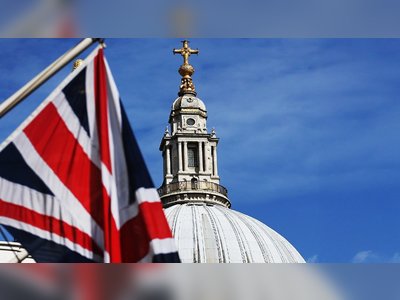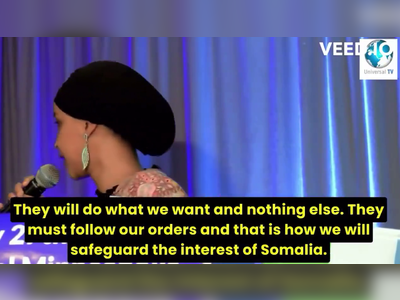From ‘they’ to ‘latinx’: how gender pronouns have expanded beyond the binary
What pronoun do you use to identify yourself? He? She? They? Something altogether different?
It’s a question increasingly asked as acceptance of a spectrum of gender and sexual identities grows. Some languages, such as Chinese and Persian, don’t assign nouns a gender or already have a gender-neutral form for people built in. But in languages whose grammar is traditionally based on exclusively male or female options, the answer to this question can still require an explanation.
So how do you talk about being queer or non-binary or gender nonconforming in grammatically gendered languages? In many ways, in fact.
In recent years, LGBT activists and linguists around the world have championed more inclusive language, both by creating entirely new non-binary terms and by retooling already existing words and grammar constructions. It’s not always easy.
For some people, it can be hard, scary or simply tiresome to keep explaining why they need more inclusive language. And it can be dangerous: just in the United States, hate crimes against the LGBT community have been rising the past three years, according to the Federal Bureau of Investigation.
So for the next time you ask or are asked around the world, here’s a look at some possible answers in seven languages:
English: ‘they’ as singular and gender-neutral
English grammar doesn’t distinguish between genders except in assigning a masculine or feminine singular pronoun.
In 2019 the Merriam-Webster dictionary added “they” as the pronoun to use for a “single person whose gender identity is non-binary.” Two years prior, in 2017, “they” as a gender-neutral form was added to the Associated Press Stylebook, the gold standard of sorts for journalists. The Washington Post, meanwhile, made the style guide change in 2015.
Critics of the change have argued that “they” as both singular and plural can be confusing and muddy a sentence’s syntax. Shakespeare and Jane Austen, among many other famed English writers, didn’t think so. They used singular “they” and “their,” as was the standard in English until Victorian-era grammarians shifted course and imposed “he” above all.
Spanish: alternative inclusive case endings such as ‘x’ or ‘@’ and ‘e’
Spanish has feminine and masculine cases added to all nouns. Even the word for “the” differs if the noun is male (el) or female (la). Nonetheless, some Spanish speakers say it doesn’t have to be that way.
In the United States, it’s now common to use “x” or “@” to create a gender-neutral noun: that’s why you may have seen “latinx,” or “latin@,” instead of the binarylatino (male) and latina (female). The popularised use of this form, however, has angered some Spanish speakers, who see it as a token term imposed on Spanish by American English speakers rather than an inclusive move from within.
Enter teens in Argentina, who, as The Washington Post’s Samantha Schmidt reported, are leading the charge to eliminate gender in their language.
“In classrooms and daily conversations, young people are changing the way they speak and write – replacing the masculine ‘o’ or the feminine ‘a’ with the gender-neutral ‘e’ in certain words – to change what they see as a deeply gendered culture,” Schmidt wrote. “Their efforts are at the Centre of a global debate over gender, amid the growing visibility of non-binary identities and a wave of feminist movements worldwide.”
The movement made headlines in Argentina last year, after a young activist, Natalia Mira, used the gender-inclusive language during an interview and was attacked by the male journalist on the live broadcast.
Spanish is a language spoken widely around the world, so there’s also no set standard, as different dialects and communities have their own preferences. Another form to know is “elle” as a gender-neutral pronoun alongside ella (she) and él (he).
Arabic: the dual as neutral and gender-bending the binary
Arabic is another grammatically gendered language, with each verb, noun and adjective always assigned either a male or female case. The male is the default in plurals, even if it’s just one male in an otherwise female group.
Modern standard Arabic, based on Koranic classical Arabic, additionally has a dual option for nouns and verbs that doesn’t imply a specific gender. Some people therefore use the dual of they and you – “huma” and “intuma” – as a gender-neutral alternative. Colloquial Arabic spoken today has largely done away with the dual, so this form can sound very formal to those not in the know.
Others play around with the language in different ways, such as interchanging masculine and feminine pronouns or a speaker choosing to subvert the male case’s patriarchal dominance and default to the female form. Arabic has many dialects, each with its own distinct grammar constructions and words, so different communities have developed their own colloquial codes. In some Tunisian dialects, for example, it’s already common to use the feminine pronoun for everyone.
For queer and feminist communities in the Middle East, the fight to gain acceptance in society has come in tandem with another conversation: how to define words such as gay, bisexual and transgender in Arabic. Some people default to a transliteration of the English words in LGBT, others prefer the phrase “mujtama’a al meem” – or the meem community – a reference to the m-sounding Arabic letter that starts off these terms when translated into Arabic.
After years of efforts led by activists in Lebanon, the words “mithly” and “mithliya” to mean gay are now standard for many media (replacing the previous term, which translated as “deviant” or “pervert”).
Public awareness and tolerance of this inclusive language remains extremely low in Arabic-speaking countries. To change that, Arabic speakers describe their efforts as part of a broader move to de-westernise and reorient the discussion around gender and sexuality.
Rather than just replicating words from English, they are working to cultivate and normalise the language needed to talk about these topics from within Arabic’s rich lexicon and history, such as drawing from poetry depicting same-sex relations in medieval times. This work is also being championed by feminist groups, such as Wiki Gender, a collaborative platform creating a dictionary of gender-inclusive Arabic.
Hebrew: new gender-neutral endings for verbs and nouns
Hebrew, like Arabic, assigns a gender to verbs, nouns, and adjectives based on the noun. LGBT and feminist activists in Hebrew have similarly championed inverting the gender divides, such as defaulting to a feminine plural or using a “mixed” gender, sometimes male and sometimes female for the same person.
Among Hebrew speakers in Israel and other Jewish communities, there are also now several ways to grammatically eliminate the binary and express a verb or noun in gender-neutral ways. The Nonbinary Hebrew Project, for example, has systemically built a third-gender in Hebrew, in part by drawing on non-binary and queer references in Jewish texts such as the Talmud and Torah. As the group argues: the male rabbis writing the Mishna, a third-century book of Jewish commentary, recognised several gender categories, so modern-day Hebrew speakers surely can, too.
In Israel, a related approach is to put both the male and female cases on nouns and verbs, sometimes with a full stop in between, so that all are fluidly included.
A Jewish summer camp in the US devised another construction to include campers who are trans or non-binary: along with “chanich”, male camper, and “chanichah”, female camper, they now have “chanichol”, a camper with an unspecified gender. In addition to this new “ol” singular ending, they created a new plural ending: “imot”, which combines the “im” at the end of masculine plural nouns and the “ot” at the end of feminine ones.
Despite the many alternatives circulating, the Academy of the Hebrew Language has declined to consider them.
German: prioritising gender-neutral terms
German’s notoriously complicated syntax includes male, female and neutral grammatical genders. The neutral has usually not applied for people, with some notable exceptions. That’s changing.
In January 2019, Hanover became the first German city to mandate that all official communication, such as emails, fliers and forms, use gender-neutral nouns. Instead of using the word for a male voter (wähler) and a female voter (wählerin), for example, the municipality would instead use words that don’t convey one gender or another, such as voting person (wählende).
This was in keeping with previous moves by other German institutions, like the federal justice ministry, which in 2014 mandated that all state bodies use gender-neutral formulations in their paperwork, The Guardian reported.
Languages are rich and lively, so there are naturally other options around. As Germany’s broadcaster Deutche Welle explained: “Traditionally, gender differentiation in German is signified by the suffixes ‘r’ or ‘rn’ for men (singular and plural), and ‘in’ or ‘innen’ for women (singular and plural) … Current attempts to shorten the space devoted to accepted forms of differentiation have included the introduction of an upper case ‘I’ sandwiched in compound nouns addressing both males and females at once.
An asterisk, known as the ‘gender star’ has also been added to include citizens who do not consider themselves either.”
As with other countries, the Association for German Language has rejected these alternative forms.
French: asterisks to make gender-neutral nouns
French also assigns a gender of male or female to all nouns referring to an individual; references to a group of people are by default defined by male pronouns unless the group is made up entirely of females. French’s storied linguistic gatekeeper, the Académie Française, is very fine with this. Others are not.
“For years, a campaign led mostly by French feminists has sought to democratise this most subtle of romance languages by pushing back against the gender rules that have confounded anglophone students for centuries,” The Washington Post reported in 2017. “Certain linguistic constructions, critics argue, efface women from being seen in various personal and professional capacities.”
The idea is instead to use asterisks to combine case endings and create a more inclusive gender-neutral plural, a first step that neither privileges the male as a norm nor excludes females and a gender spectrum from the syntax.
Every action has a reaction, though, and in 2017 France’s government banned the use of inclusive, gender-neutral language in official documents.
Swedish: ‘hen’ as singular and gender-neutral
In 2015, Sweden added to the country’s official dictionary the word “hen” – a gender-neutral pronoun that linguists had pushed as an alternative to the male pronoun “han” and female “hon”.
As The Washington Post reported then, “Five years ago, barely anyone in Sweden was aware of the word […] According to experts, the ‘hen’-revolution in Sweden has two primary origins: LGBT groups have promoted the pronoun as a way to raise awareness for their cause. However, support for the idea has also come from a more unexpected side: nurseries, kindergartens and preschools such as Egalia increasingly argue that the pronoun’s usage allows children to grow up without feeling the impact of gender biases.”













